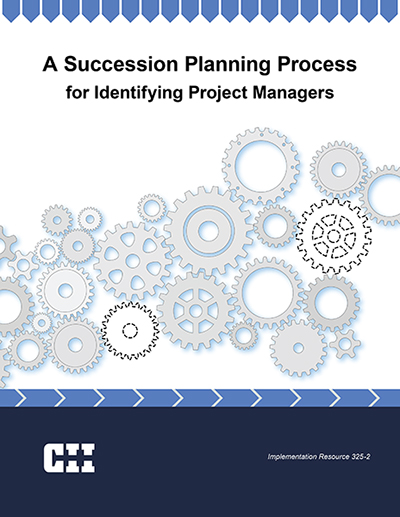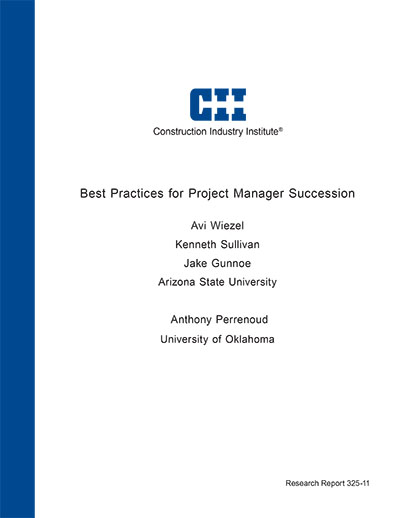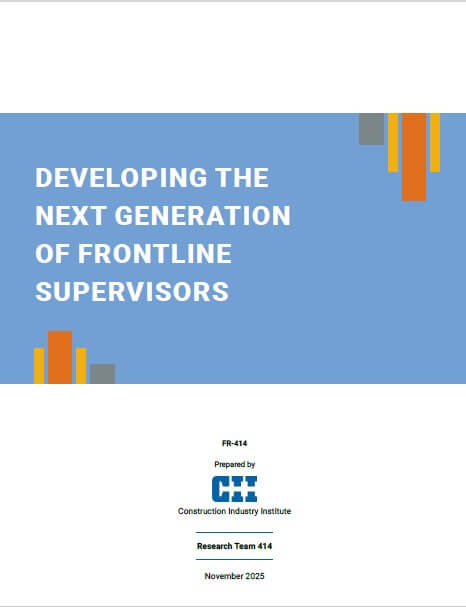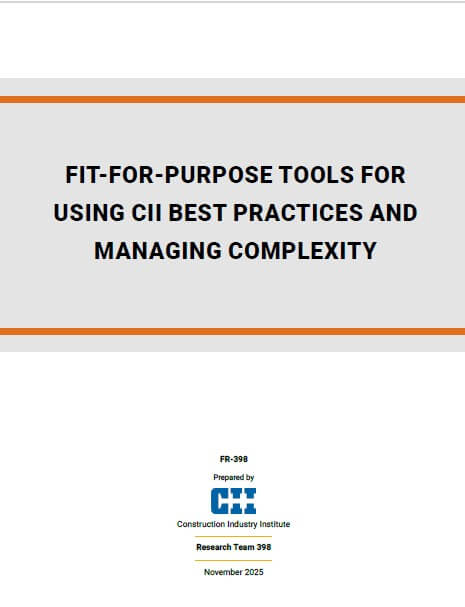
A Succession Planning Process for Identifying Project Managers
Many companies only develop succession plans for executive-level positions, but some other companies also develop talent at lower levels through high-potential programs. High-potential programs aim to identify top talent within an organization: individuals to be targeted for development actions and career progression. Participants in these programs are commonly referred to as “HiPos.” The criteria used to identify HiPos vary by company, as do the development activities and methods employed to measure success.
Identifying high-potential talent is a business imperative to ensure the growth and sustainability of organizations; however, talent management differs from actual succession planning. Whether a company has a well-established succession planning process or is on the forefront of implementing a plan, CII Research Team 325 (RT-325) recommends that the organization create a formalized succession plan that can operate at various organizational levels. Simply having a formal company-wide succession plan can greatly decrease the negative impacts of talent vacancies.
This resource covers the six phases and 24 steps that constitute a formal succession planning process. These phases are based upon previous research into best practices for succession planning (Appelman and Kennedy 2013; Tichey 2104). RT-325 recommends that organizations focus on one phase at a time, in order to implement sustainable changes.
{^widget|(widget_displayname)WatermarkImage|(name)WatermarkImage|(image)%7e%2fCII%2fmedia%2fPublications%2f325_2_Figure1.jpg%3fext%3d.jpg|(width)|(height)^}
The 9Box Grid is a proven tool most human resource professionals use in today’s market to help identify employee performance and potential. The Society of Human Resource Managers (SHRM) explains that the 9Box Grid is a simple table graph that rates “potential” on the y-axis and “performance” on the x-axis. The SHRM further explains that the 9Box Grid allows managers to easily view employees’ actual and potential performance. Individuals in the uppermost right are deemed high-potential candidates, while individuals in the lower left are considered to be “at-risk.” (See Figure 4.)
To implement the 9Box Grid, one needs to consider several key steps before assigning in which quadrant an employee should reside:
- Performance History – Supervisors should obtain the employee’s past performance appraisals to identify the employee’s performance trend. Typically, appraisals over a three- to five-year period should suffice. Look for scores that show the ability to maintain an “exceed expectations” score over a period of time.
- Impact on Others – Obtain observations of the employee from clients (internal and external), peers, subordinates, and others that work closely with him or her. This information can be acquired by completing a standard 360-degree appraisal. Look for feedback that shows a positive impact and the ability to maintain productive relationships at all levels.
- Potential – Potential incorporates various skills and attributes of an employee that will lead to high performance in a new job position. Potential can be measured by the employee’s ability to learn and commitment to improving his or her skills through continual development and training. Superiors can also look for the attributes that will be required if the employee is to fill the current vacancy. In the case of PMs, companies can implement the RT-325 interview questions to identify high-potential traits.
(IR325-2, pp. 10-11)



